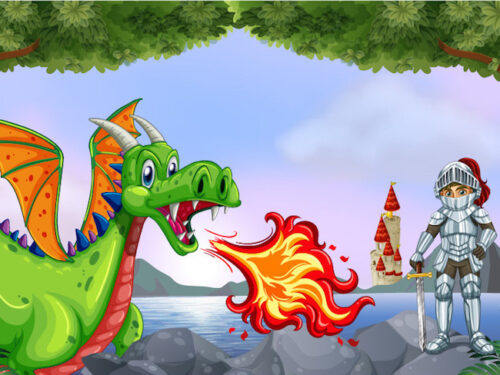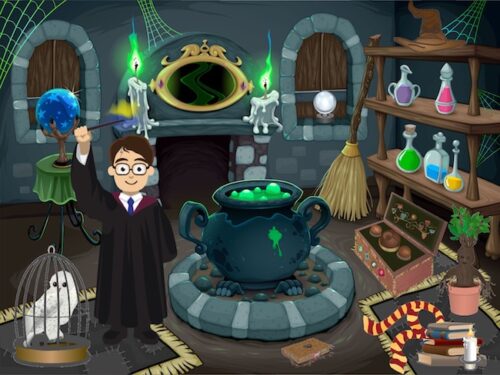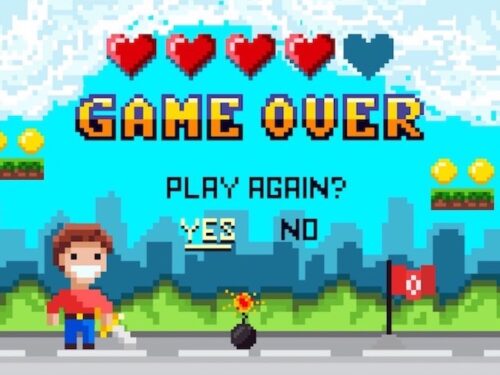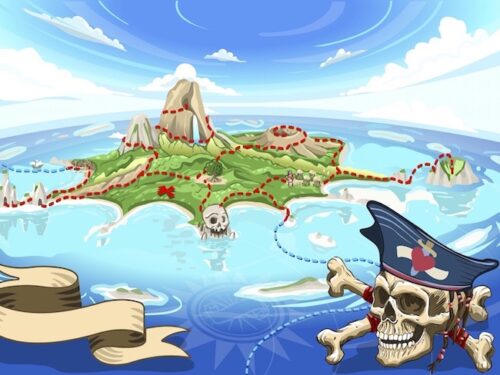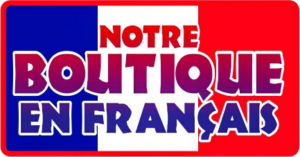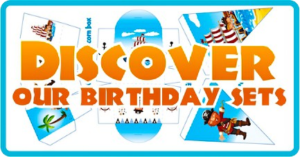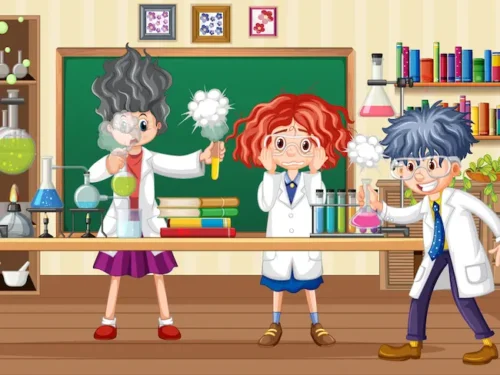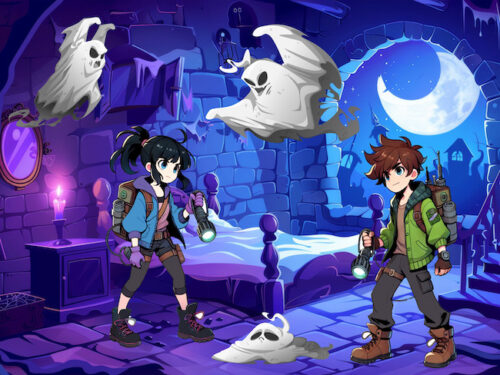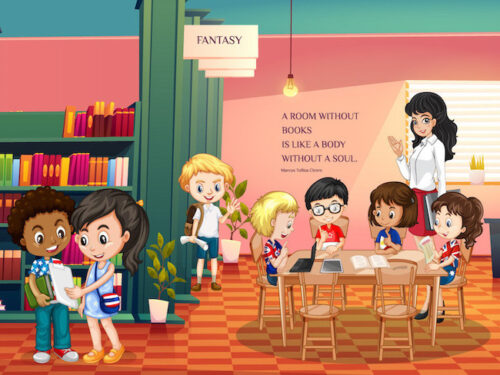Personalized treasure hunts are a fantastic way to captivate children’s attention and create unforgettable experiences. By tailoring the games to each child’s specific interests, you ensure that they remain engaged and excited throughout the activity. Whether it’s for a birthday party, a family gathering, or just an afternoon of fun, personalizing a treasure hunt can turn a simple game into a magical adventure. In this article, we will show you how to adapt treasure hunts effectively, using practical examples and tips to make each hunt as special and unique as possible.
Check out our escape room kits to play with your family
Benefits of Personalized Treasure Hunts
Increased Engagement and Motivation: Personalizing the treasure hunt based on children’s interests keeps them excited and motivated to participate.
Skill Development: Themed treasure hunts help develop specific skills such as problem-solving, reading, and teamwork.
Creating Lasting Memories: Personalized hunts create unique and memorable experiences that resonate with each child.
Encouraging Collaboration and Teamwork: These hunts promote social skills as children work together to solve clues and find the treasure.
Adaptability for Different Ages and Levels: Customizing the complexity of the hunt ensures it’s enjoyable and challenging for children of various ages and skill levels.
By personalizing treasure hunts, you not only make the activity more engaging but also support the children’s development in a fun and interactive way.
Identifying Children’s Interests
Observation and Discussion: Watch what games, books, and shows children enjoy. Ask them about their favorite characters and activities.
Involving Children in Theme Selection: Let children choose from a few theme options to increase their excitement and engagement.
Consulting Parents and Teachers: Gather insights from those who know the children best to understand their interests better.
Using Questionnaires or Surveys: For larger groups, use simple questionnaires to find out the children’s favorite themes and activities.
Analyzing Current Trends: Stay updated with popular trends in children’s entertainment to select themes that will captivate them.
By accurately identifying children’s interests, you can tailor the treasure hunt to ensure it captures their imagination and keeps them engaged.
Check out all our treasure hunt games to liven up a birthday party for children from 4 to 12 years old.
Choosing a Treasure Hunt Theme
Popular Theme Examples:
- Pirates: Classic adventures with maps, treasure chests, and pirate lingo.
- Superheroes: Missions where kids use their “superpowers” to solve clues.
- Fairy Tales: Magical quests with fairies, knights, and enchanted items.
- Jungle Explorers: Adventure in the wild with animal clues and hidden treasures.
- Mysteries: Detective-themed hunts where kids solve puzzles to uncover the mystery.
Case Study: In a successful pirate-themed treasure hunt, kids received pirate hats and followed a map to find treasure hidden in a sandbox, solving riddles written on parchment along the way.
Adapting Themes to Interests: Customize themes based on what the children love. For a dinosaur enthusiast, create a prehistoric adventure with fossil clues.
Practical Considerations:
- Feasibility: Ensure the theme is practical for your location and resources.
- Decorations and Accessories: Use themed decorations and props to enhance the experience.
- Space: Choose a theme that fits the available space, whether indoor or outdoor.
Personalized Elements: Incorporate specific details like using the children’s names in the clues or incorporating their favorite toys as part of the treasure hunt.
Selecting the right theme tailored to children’s interests and incorporating personalized elements will make the treasure hunt more engaging and memorable.
Take a look at our police investigation games to organize a great detective game!
Creating Personalized Clues and Riddles for Treasure Hunts
Types of Clues:
- Visual: Use pictures, maps, or symbols that fit the theme.
- Verbal: Write riddles, rhymes, or simple instructions.
- Physical: Incorporate objects the children need to find or interact with.
Adapting Clues to Interests:
- Pirate Theme: Use treasure maps and clues hidden in bottles or chests.
- Superhero Theme: Create mission cards with tasks like decoding secret messages.
- Fairy Tale Theme: Use scrolls with magical spells and hidden fairy items.
Practical Examples:
- Pirate Treasure Hunt: Clues could be rolled-up maps hidden in sandboxes, leading to a treasure chest.
- Superhero Adventure: Clues could be hidden in “villain lairs” around the house, each with a puzzle to solve.
Tips for Creating Clues:
- Clarity and Simplicity: Ensure clues are clear and age-appropriate.
- Progressive Difficulty: Start with easy clues and gradually increase difficulty to maintain engagement.
- Variety: Mix different types of clues to keep the hunt dynamic and exciting.
By creating personalized clues that match the chosen theme and children’s interests, you can make the treasure hunt both challenging and enjoyable. Incorporating visual, verbal, and physical elements will enhance the experience and keep the children engaged.
Setting Up the Treasure Hunt
Planning and Logistics:
- Choosing the Location: Select a safe and suitable place, whether indoors or outdoors, that fits the theme and allows for hiding clues.
- Preparing Materials: Gather all necessary items like maps, clues, decorations, and the final treasure. Ensure everything is ready before the event.
Safety and Group Management:
- Adult Supervision: Ensure there are enough adults to supervise the children and assist if needed.
- Group Size: Organize children into manageable groups to ensure everyone can participate and be engaged.
Executing the Hunt:
- Introduction: Start by explaining the theme, rules, and the objective of the treasure hunt to the children.
- Distributing Clues: Hand out the first clue and guide the children as they solve each one, providing hints if necessary to keep the hunt moving.
- Resolving Riddles: Encourage teamwork as the children work through the clues, ensuring they stay motivated and engaged.
- Finale and Rewards: Conclude the hunt with a grand reveal of the treasure. Offer small rewards or treats to celebrate their success.
By following these steps, you can ensure a well-organized and fun treasure hunt. Proper planning, safety measures, and clear instructions will help create a memorable and enjoyable experience for all the children involved.
Please visit our website where we’ve compiled a comprehensive list of game ideas for children’s parties. You’ll find a wealth of fantastic suggestions!
Tips for Successful Personalized Treasure Hunts
Adaptability and Flexibility:
- Prepare for the Unexpected: Have backup plans in case of weather changes or unforeseen issues. Be ready to adjust the difficulty of clues based on the children’s responses.
- Maintain Engagement: Adjust the pace of the hunt to keep children interested. If they seem tired or frustrated, introduce a simpler clue or a quick break.
Using Feedback:
- Gather Opinions: After the hunt, ask the children and parents what they enjoyed most and what could be improved.
- Observe Reactions: Pay attention to which parts of the hunt were the most exciting or challenging for the children.
Inclusive Participation:
- Ensure Everyone is Involved: Make sure every child has a role or a turn in solving clues. Rotate responsibilities to keep everyone engaged.
- Tailor to Abilities: Adjust tasks to fit different ages and abilities so that all children can contribute and enjoy the hunt.
Maintaining Engagement:
- Keep a Steady Pace: Maintain a balance between activity and downtime to keep energy levels up.
- Vary Activities: Incorporate a mix of physical and mental challenges to cater to different interests and skills.
Prioritizing Safety:
- Adult Supervision: Ensure constant supervision to handle any issues promptly.
- Safe Play Zones: Clearly define the play area and avoid locations with potential hazards.
By incorporating these tips, you can create a treasure hunt that is not only fun but also safe and engaging for all participants. Adaptability, feedback, inclusivity, and safety are key to ensuring a successful and enjoyable event.
Conclusion
Personalized treasure hunts provide a unique and engaging way to captivate children’s imaginations while fostering important skills. By tailoring the hunt to their specific interests, choosing the right theme, creating customized clues, and ensuring careful planning and safety, you can create memorable and enjoyable experiences for children.
These hunts not only entertain but also encourage teamwork, problem-solving, and creativity. Whether for a birthday party or just an afternoon of fun, a personalized treasure hunt can turn a simple game into an extraordinary adventure.
Try creating your own personalized treasure hunt and watch the children’s eyes light up with excitement. For more ideas and resources, explore our collection of printable treasure hunts, mystery games, and escape room kits to make every event special and unique. Transform playtime into a thrilling adventure that children will remember for years!
For more ideas and resources, visit our online store for printable treasure hunts, mystery games, and escape room kits. Transform every playtime into an exciting and educational adventure!
Explore our games crafted in French for an immersive and engaging experience!







